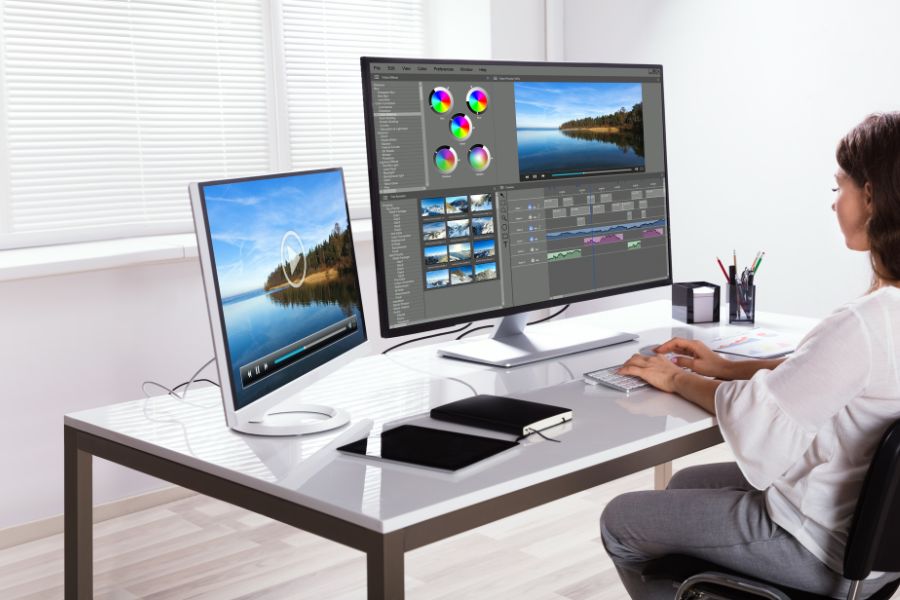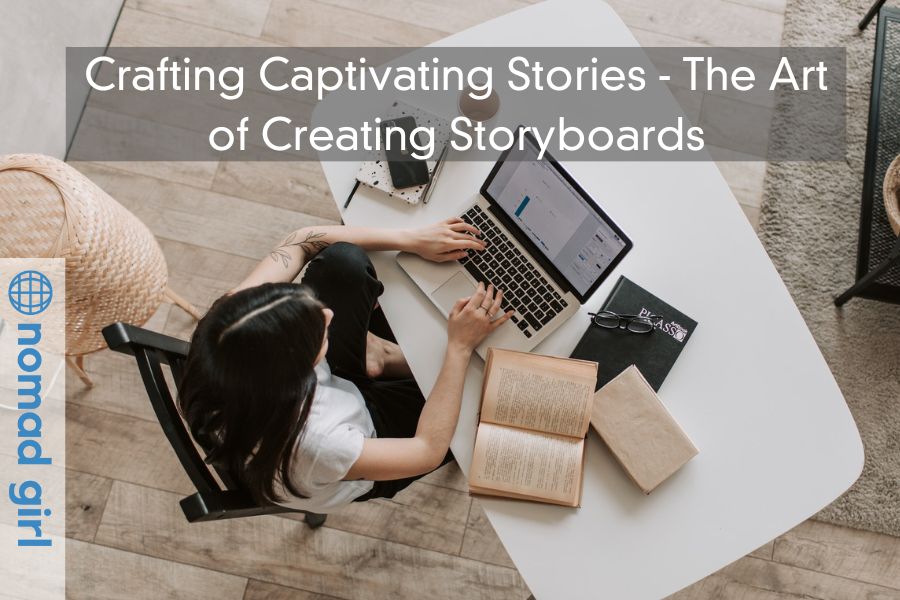Video editing and video storytelling has become a skill that many Digital Nomads now use today. In this article we will go deeper into the art of creating storyboards an essential tool for every videographer wanting to tell a captivating story.
When it comes to conveying ideas and narratives, storytelling is an age-old technique that captivates and engages audiences across various mediums. One of the most effective tools in the storyteller’s arsenal is the storyboard. In this blog post, we will delve into the art of creating storyboards, explore their significance, and unveil the secrets to crafting visually engaging narratives. Whether you’re a filmmaker, animator, or simply a creative enthusiast, this guide will equip you with the essential knowledge of how to create a storyboard with Vista Create, and bring your stories to life.
Understanding the Purpose of a Storyboard
Before diving into the process of creating a storyboard, it is crucial to understand its purpose. A storyboard serves as a blueprint for visualizing and organizing the sequential flow of a story, be it in film, animation, or any other visual medium. It enables creators to plan shots, visualize scenes, and establish the desired pacing and composition. A well-constructed storyboard sets the foundation for a compelling narrative, allowing for smoother execution during production.
Planning and Preparation
Creating a storyboard requires meticulous planning and preparation. Here are the key steps involved:
- Define your narrative: Clearly articulate the story you want to tell. Determine the central theme, characters, and desired emotional impact. This will serve as the backbone of your storyboard.
- Break down the script: If you have a script, break it down into key scenes and actions. Identify the essential moments that need to be visually conveyed in your storyboard.
- Determine shot types: Decide on the most effective shot types to communicate your story. Consider wide shots, close-ups, medium shots, and any other angles that can enhance the narrative’s impact.
- Sketch the frames: Start sketching your frames, depicting each scene or action sequentially.
Focus on composition, camera angles, and character placement. Remember, these sketches don’t need to be masterpieces; they should serve as a visual guide for your narrative.
Designing Engaging Visuals
To create visually engaging storyboards, consider the following factors:
- Composition: Arrange elements within each frame to create visually appealing and balanced compositions. Use techniques such as the rule of thirds, leading lines, and depth to guide the viewer’s attention and create visual interest.
- Pacing and Timing: Storyboards should convey the desired pacing and timing of each scene. Experiment with panel sizes and layout to create a sense of rhythm and enhance the narrative’s flow.
- Visual Language: Develop a visual language that aligns with your story. Consider the mood, atmosphere, and emotions you want to evoke. Choose appropriate colors, lighting, and textures to convey these elements effectively.
- Character Expressions and Poses: Pay attention to character expressions and poses to ensure they accurately represent the intended emotions and actions. Use facial expressions, body language, and gestures to convey depth and personality.

Iteration and Collaboration
Creating an impactful storyboard often involves iteration and collaboration. Here’s how to make the most of this process:
- Seek feedback: Share your storyboard with peers or fellow creatives. Constructive feedback can help identify areas for improvement and generate new perspectives.
- Iterate and refine: Incorporate feedback and refine your storyboard iteratively. Adjust compositions, shot angles, or any other elements that may enhance the narrative.
- Collaborate effectively: If working in a team, ensure everyone understands the vision. Encourage open communication, brainstorming, and idea sharing to create a cohesive and engaging narrative.
Incorporating Storytelling Elements into Storyboards
Storyboards not only visualize the narrative but also provide an opportunity to incorporate storytelling elements that enhance the overall impact. Consider the following techniques:
- Visual Symbolism: Utilize visual symbolism to convey deeper meanings within your storyboard. Symbols and metaphors can add layers of interpretation and engage viewers on an emotional level. Incorporate objects, colors, or visual motifs that resonate with the story’s themes and subtext.
- Narrative Arc: Pay attention to the overall narrative arc. Ensure that it follows a clear structure, including an introduction, rising action, climax, and resolution. By incorporating this narrative progression into your storyboard, you create a compelling and satisfying visual experience.
- Dialogue and Text: While storyboards primarily rely on visuals, incorporating dialogue and text can enhance the storytelling process. Use dialogue bubbles or captions strategically to convey important dialogue or key narrative information. Balance the use of text with the visual elements to maintain a cohesive and engaging storyboard.
Conclusion
Storyboarding is a powerful tool for bringing stories to life. By understanding its purpose, meticulously planning, designing engaging visuals, and embracing collaboration, you can create captivating narratives that resonate with your audience. Remember, practice makes perfect, so keep honing your skills and experimenting with different storytelling techniques. Let your imagination soar as you embark on the thrilling journey of creating visually stunning storyboards.


















